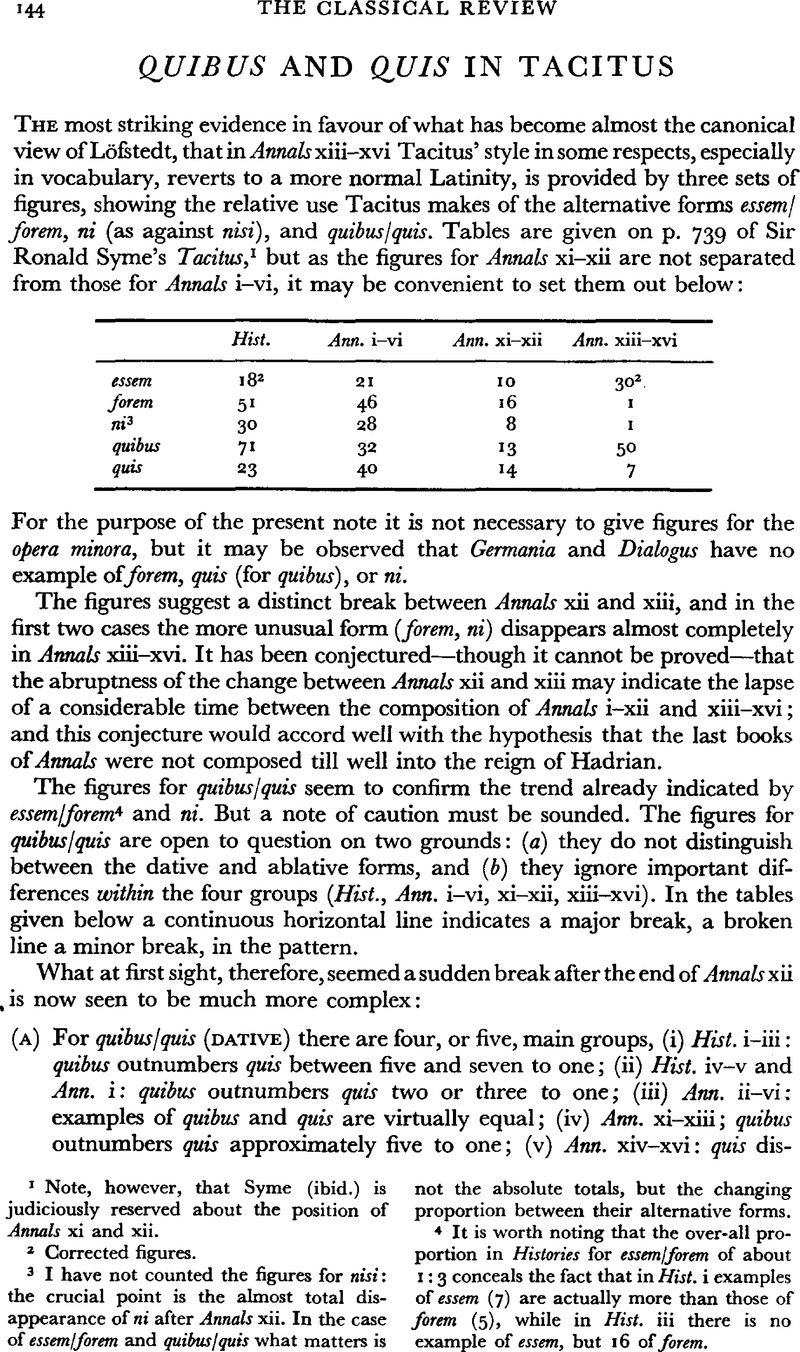No CrossRef data available.
Article contents
Quibus and Quis in Tacitus
Published online by Cambridge University Press: 27 February 2009
Abstract

- Type
- Review Article
- Information
- Copyright
- Copyright © The Classical Association 1968
References
page 144 note 1 Note, however, that Syme (ibid.) is judiciously reserved about the position of Annals xi and xii.
page 144 note 2 Corrected figures.
page 144 note 3 I have not counted the figures for nisi: the crucial point is the almost total disappearance of ni after Annals xii. In the case of essem/forem and quibus/quis what matters is not the absolute totals, but the changing proportion between their alternative forms.
page 144 note 4 It is worth noting that the over-all pro-portion in Histories for essem/forem of about 1:3 conceals the fact that in Hist, i examples of essem (7) are actually more than those of forem (5), while in Hist, iii there is no example of essem, but 16 of forem.
page 145 note 1 Includes xii. 9. 2 arte eorum quis ob accusatam Messalinam ultio ex filio timebatur, where M has qui sub and quibus ob is a possibility, though inferior to quis ob.
page 144 note 2 Includes two examples of ex quis (see below) and xiv. 21.4 where the text is not quite certain (see Addendum (iv)).
page 144 note 3 It is only in these books (Annals iii–vi and xi–xii), and for the ablative case only, that examples of quis ever outnumber those of quibus.
page 144 note 4 Note that (i) with the exception of iii. 16. 3 (where ex quibus stands in oratio recta) Annals i–xii have only ex quis; (ii) Ann. xiii has one example (xiii. 19. 2, feminine) of ex quibus, no example of ex quis; (iii) Ann. xiv has one example (xiv. 60. 3, feminine) of ex quibus, two examples (xiv. 5. 1; 42. 2, both masculine) of ex quis; (iv) Ann. xv–xvi have only ex quibus (four examples in all).
page 146 note 1 For this conclusion see now F. R. D. Goodyear, ‘The Development of Language and Style in the Annals of Tacitus’ (forth coming in Journal of Roman Studies, [1968]), where the argument is developed with the aid of much new evidence.


